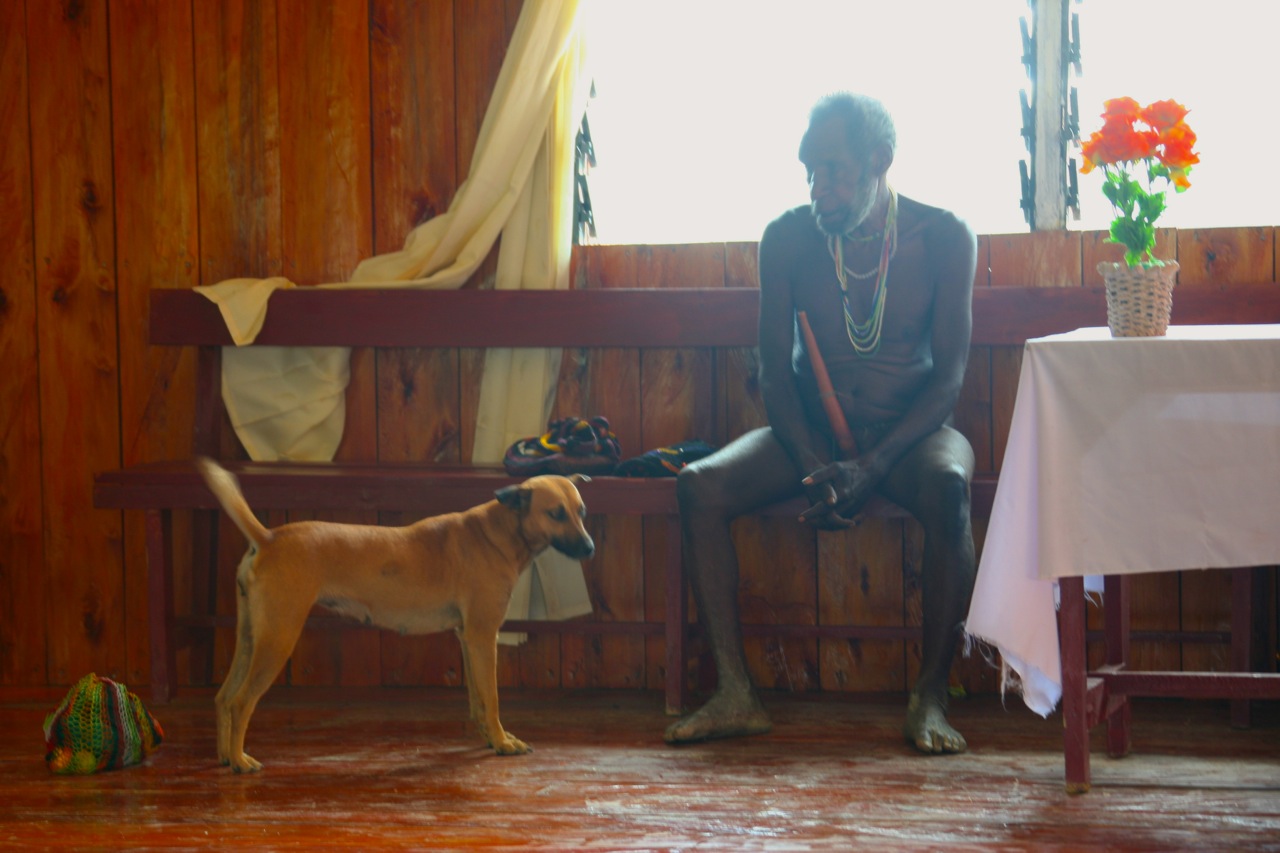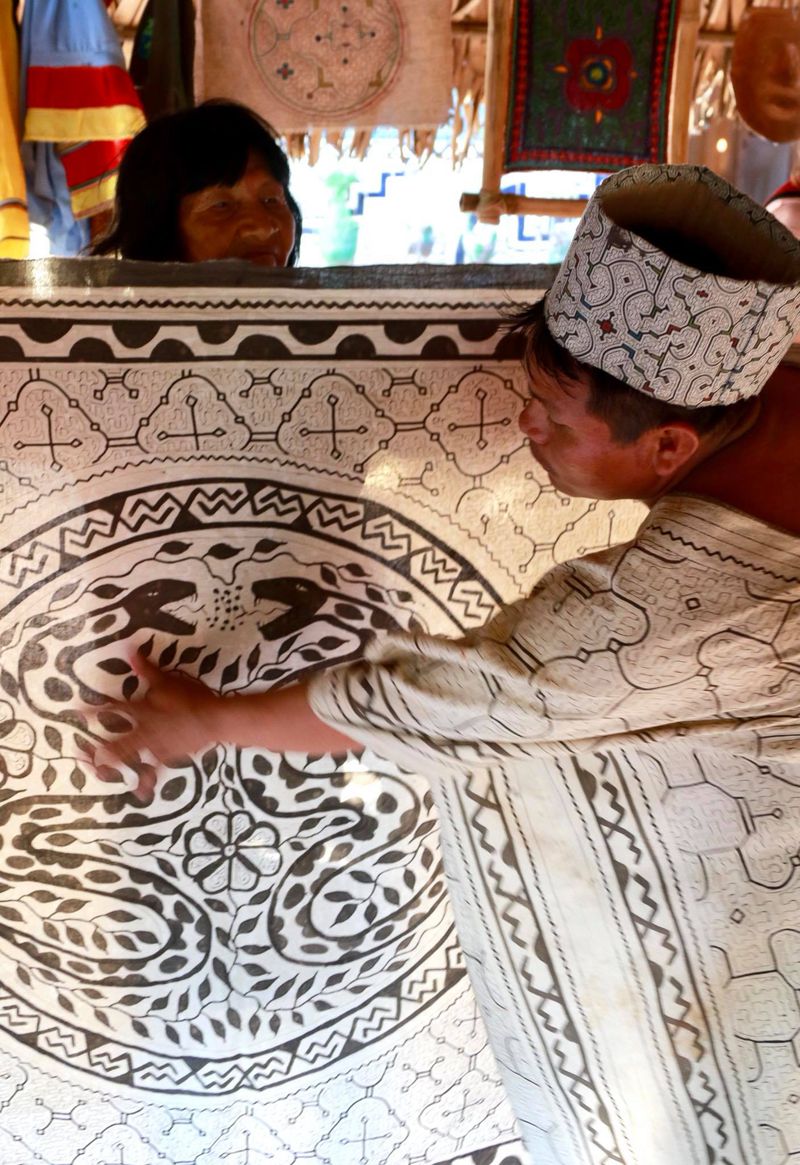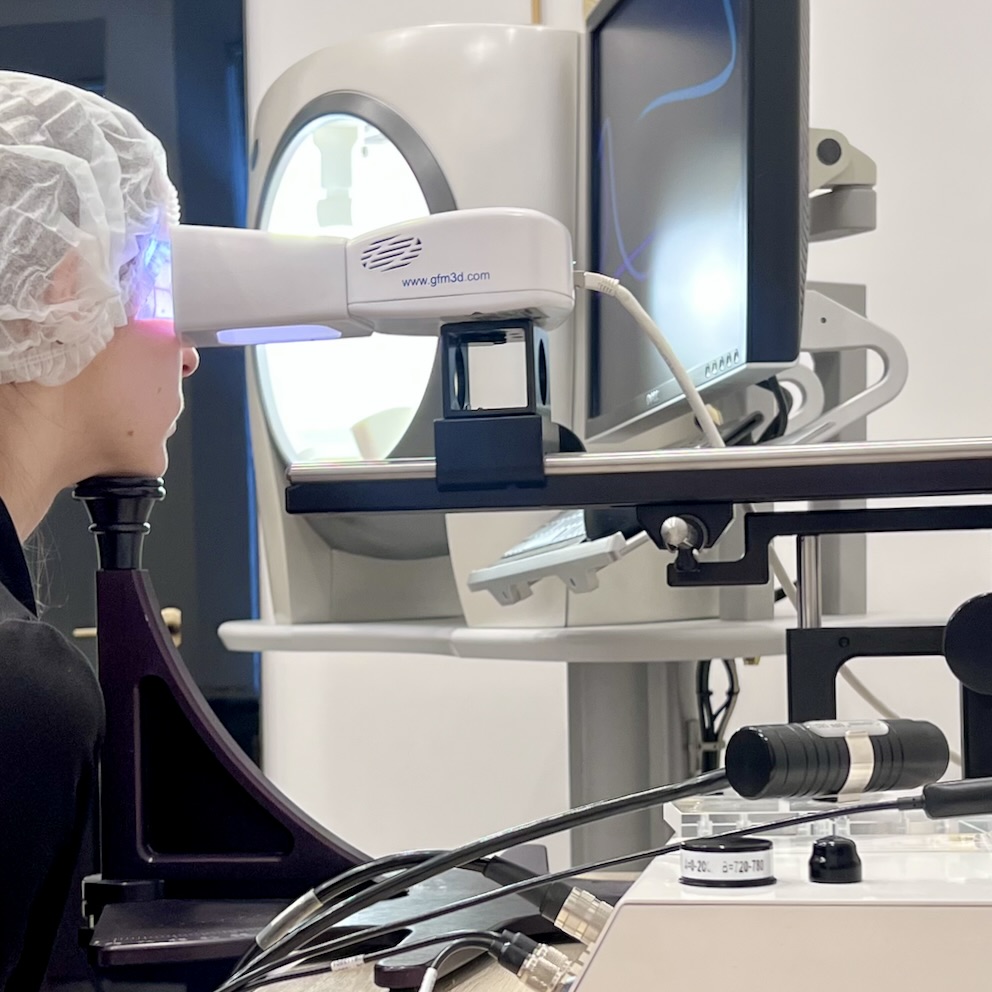The only one of the three places on the planet covered with snow on the equator is Mount Irian Jaya. Along with other mountains it seizes the Baliem valley around the perimeter while I’m seized with the feeling of being carried to the primeval world...

We are going to meet the Dani tribe and see the most ancient rural economy in the world. Somewhere on foot, somewhere by tarantas (a springless carriage). The Dutchmen were the first to visit this place in 1921, and in 1938 it was an American Richard Archbold wholaunched an anthropologic expedition, like us, at his own expense.

Moving across the mountain streams and rivers
we penetrated into the jungle.

Having lost our way we argued about the direction.
Finally we continued our way on foot and having entrusted us to our guide Mickey (a Papuan from the Lani tribe),

we moved deep into the mountainous part of the island, to the area of the 4 degrees south latitude, to the height of more than 1,600 meters above sea level, being under constant influence of the watershed line, under conditions of 100% humidity and the temperature of 38°above zero.

Mickey having found himself in the familiar environment quickly met some acquaintances. The woman readily talked to us despite the weight of the bundle which is usually fastened to the head (along with fruit there can be found little children). Besides, we could speak Russian as she didn’t understand English anyway! :)

To the strains of cicadas’ singing which are as much as 350 million years old!!! enjoying no less ancient plants we moved to the south-eastern part of the valley.
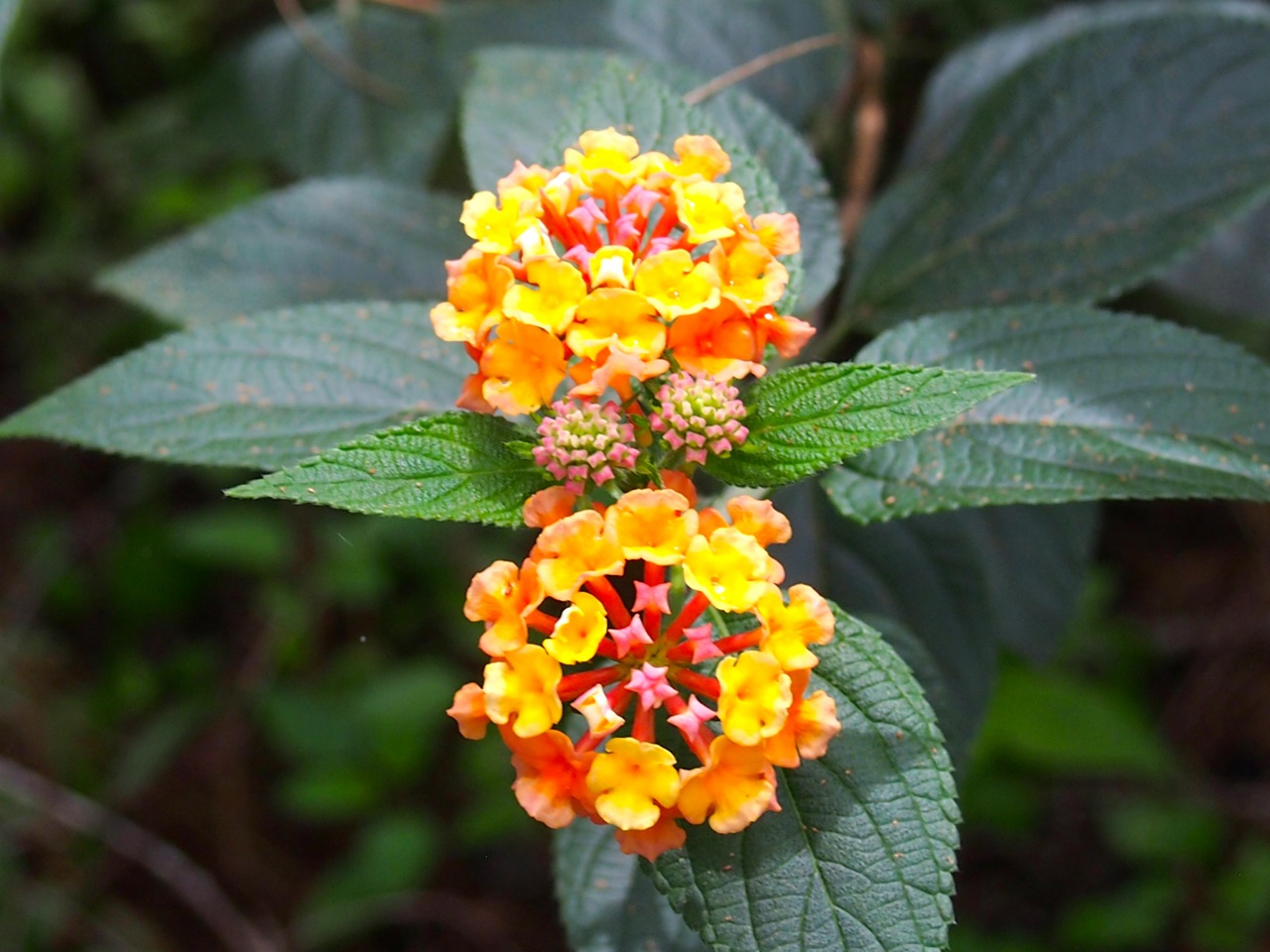
This heavenly beauty followed us during our journey. The equator and humidity have always established the best conditions for the formation of the species diversity.
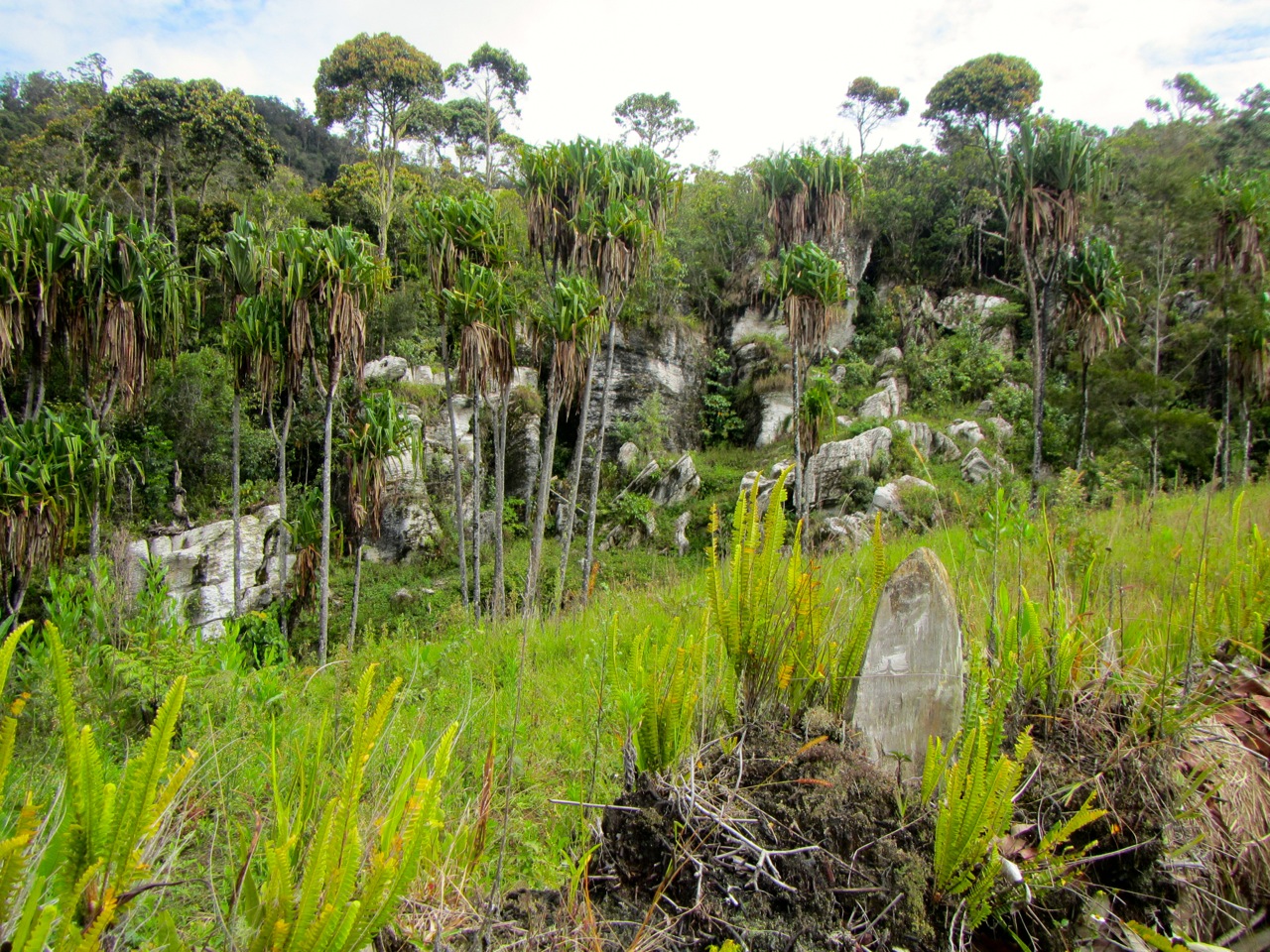

.jpg)






Some of them met us with a frightening coloring,


others with no less frightening prickles
or were inhabited with hordes of ants like in this ball
or fascinated us with their magic forms.


It’s no coincidence that the prototypes of plants for “Avatar” were gathered in those latitudes namely on Madagascar.


Along with the flowers there were not only beautiful but… tempting plants as well. For example, this Brugmansia arborea – datura tropical, the strongest hallucinogen:)

I didn’t dare taste it although… as the joke goes:
– Honey, what do you want me to bring you from Papua?
– You may bring what you want, they treat everything nowadays… :))
Mickey persuaded me from tasting it! And he added something about transforming into an animal…
The jungle can be the best gift for observation and discoveries for the person interested in botany. Now I understand why our chief guide Ph.D. in Geography Dmitriy Chernyakhovskiy was so excited when he was talking about one more finding.

Cloud jungle is not the forest as we traditionally see it. It is more like a body living and developing according to its own laws. It feels like a new man when walking through the jungle…


Especially if the Nature’s masterpieces are almost everywhere.

Just like this plant the flowers of which contain acid. Due to the latter it can feed on the insects flying inside.

One of these plants triggers some professional associations for me as for the dermatovenerologist… :)

The local people could not understand why we were surprised. Meanwhile they could just mind their step! :)
But they understood and gave a warm welcome to some things from the “European culture”.

I should note that you must not stop in the jungle even for a minute as at once something is crawling over you or at worst is laying maggots into you.

The jungle area quickly changed for no less colorful but a harder crossing over the mountain river,

the bottom of which was represented by the coal deposit as ancient as Life itself.

This is the place where you can find ammonites, if to look for them properly. They refer to an extinct group of cephalopods which had existed from the Devonian Period till the Cretaceous period (about 400 million years ago) and got their name in honor of the ancient Egyptian deity Amon with curved horns. A Papuan in Wamena once offered us to buy such horns.
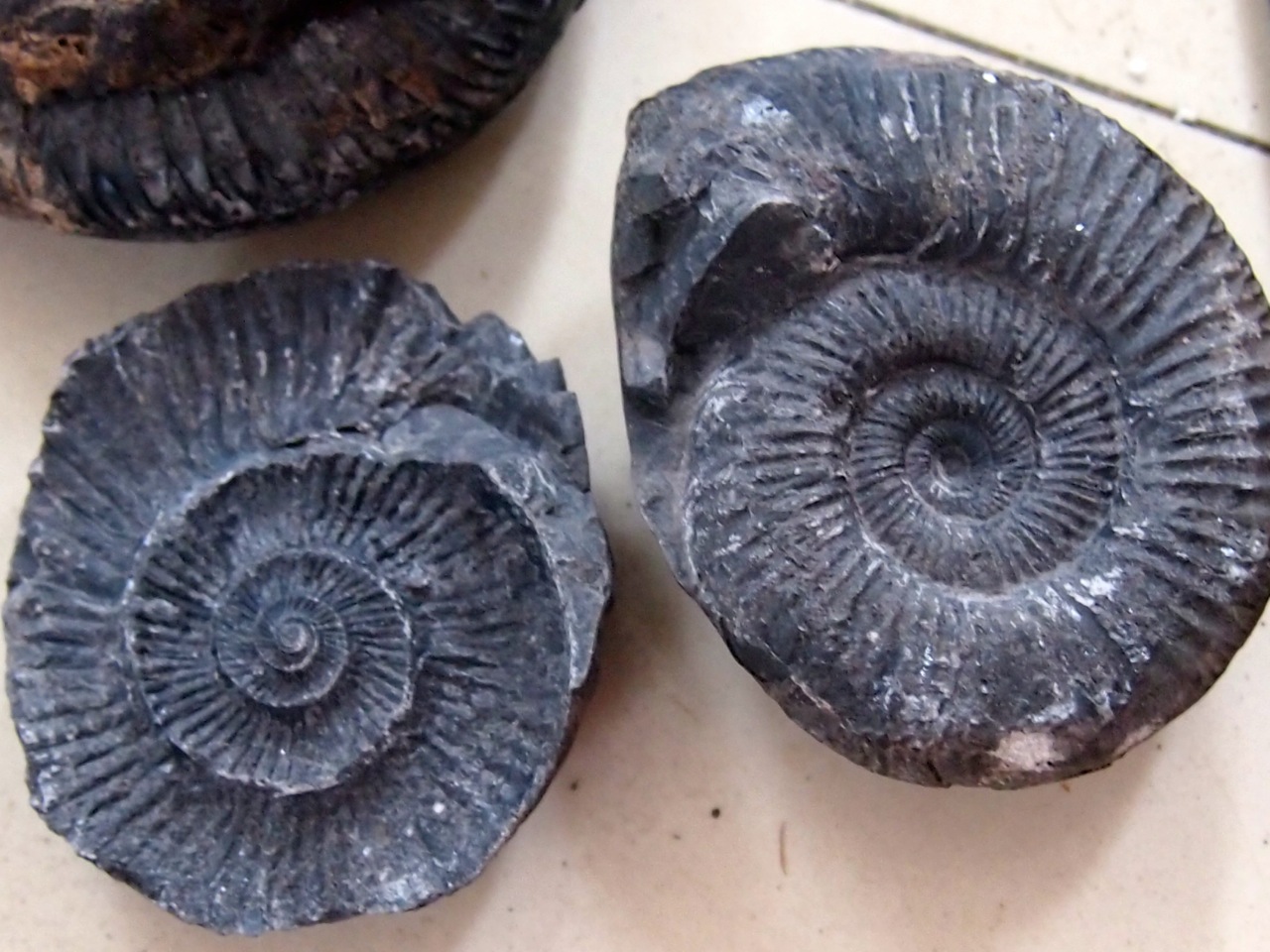
I was lucky just to hold their fragments in my hands though I was happy as well to realize how ancient they were.

The mountain stream even in its quietest part didn’t give us a chance to relax reminding us with a sound of showing some respect for it.
Having crossed the river a-la gymnast on the beam

and having made a series of picturesque and rather steep descents and ascents,



we got an opportunity to enjoy the result of our efforts as well as a beautiful view on the valley which was cosily located under cover of the low drifting clouds in the midst of the mountains as if between the palms of Creator.


A look in the direction of our way made it clear that this was really the most ancient anthropogenic landscapein the world and that they had started growing batata (sweet potato) long before the appearance of the people with fair skin...

The view of the cleared-up vegetable garden added to a better understanding of how many efforts were applied to make these garden beds on the slope. One should indeed possess the centuries-long experience to do this. Though it looks less appealing at close rangeit emphasizes the point about industry of the local tribes.

Purely by chance we came across a man from the Yali tribe. This is the tribe of small Papuans who despised other tribes for cannibalism stressing the fact that they eat palms only...

We had a good sense to make our visit brief. :) You can understand why!
His penis gourd is a kind of a tube put on the penis. Being caved of a dried pumpkin it shows his social significance among the tribesmen.
Actually for more than a thousand years the highland Papuans of the Yali, Dani and Lani nations (the largest tribes in Irian Jaya) have fancily ornamented their bodies and have been wearing the penis gourd. And the Dani men use a thin penis gourd 30 cm long, the Lani men’s penis gourd is wider and shorter and the Yali men (those who eat only human palms and are the smallest pygmies) use the loooongest ones! They make the penis gourd of a long pumpkin which covers the penis and holds it upward to symbolize permanent erection. To prevent the penis gourd from falling down it is fixed to the waist skin with a fine rattan thread.
Women should wear woven grass skirts and nothing more.
Families are polygamous here as the Masai people in Africa. Even despite the fact that the majority of them adopted Christianity and Catholicism. It is quite easy to have the second and the third wife. Like the cow for the Masai people, their currency is pigs: the number of pigs corresponds to the number of wives, 10 pigs = 1 wife.
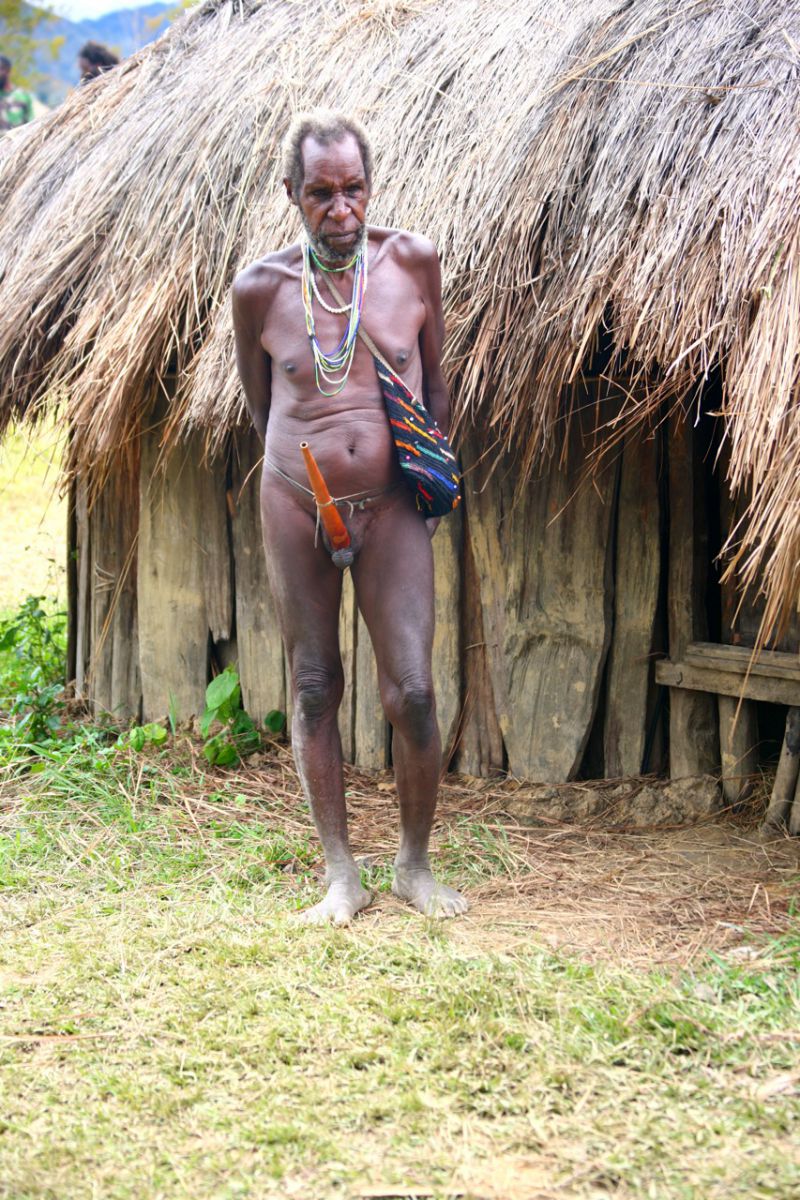
Actually in the highlands there are Papuan women dressed in some clothes though unpleasantly looking ones. Theyareattractivewiththeiruniquefacialfeatures. Look!

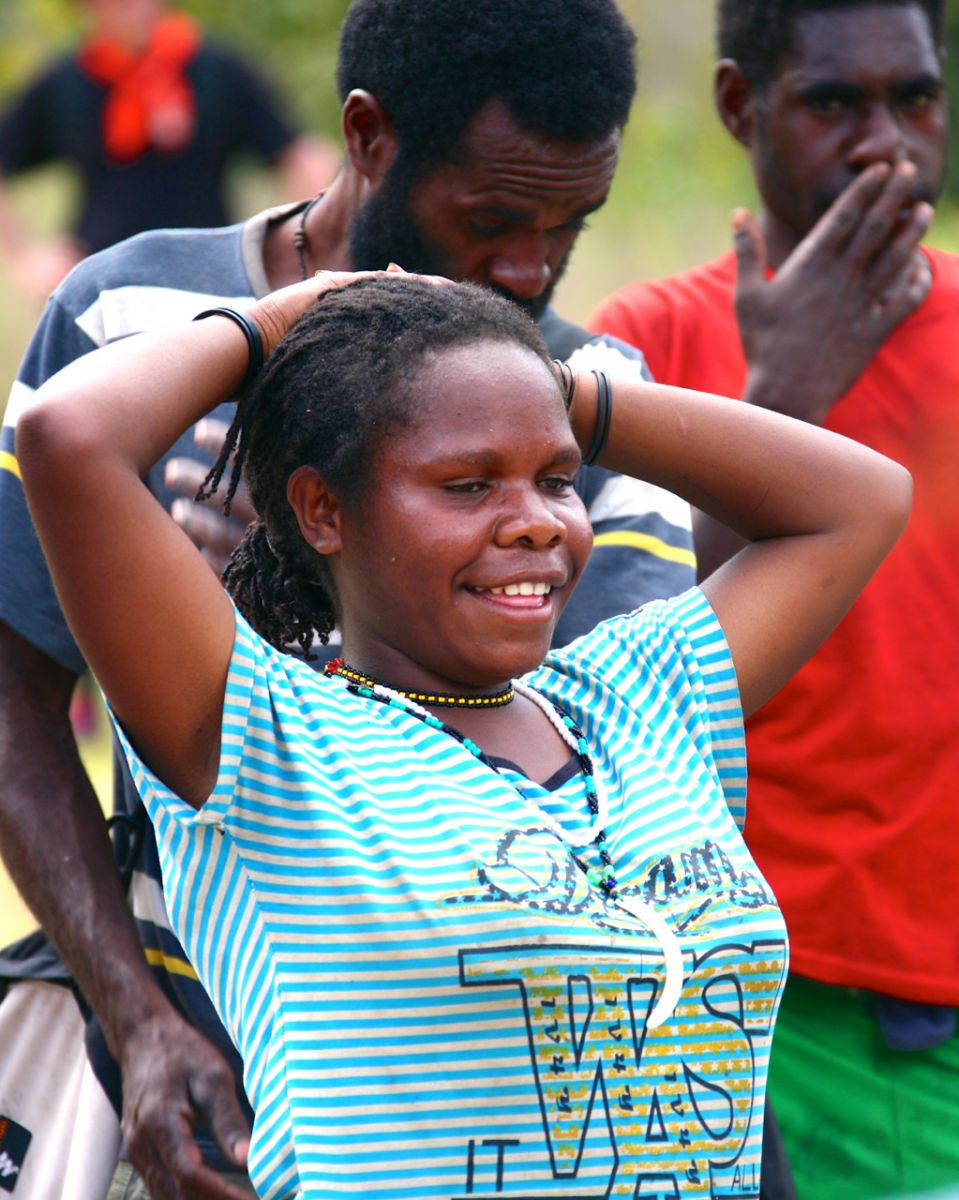



They all look alike and different at the same time, don’t they? As all the women in the world!;)
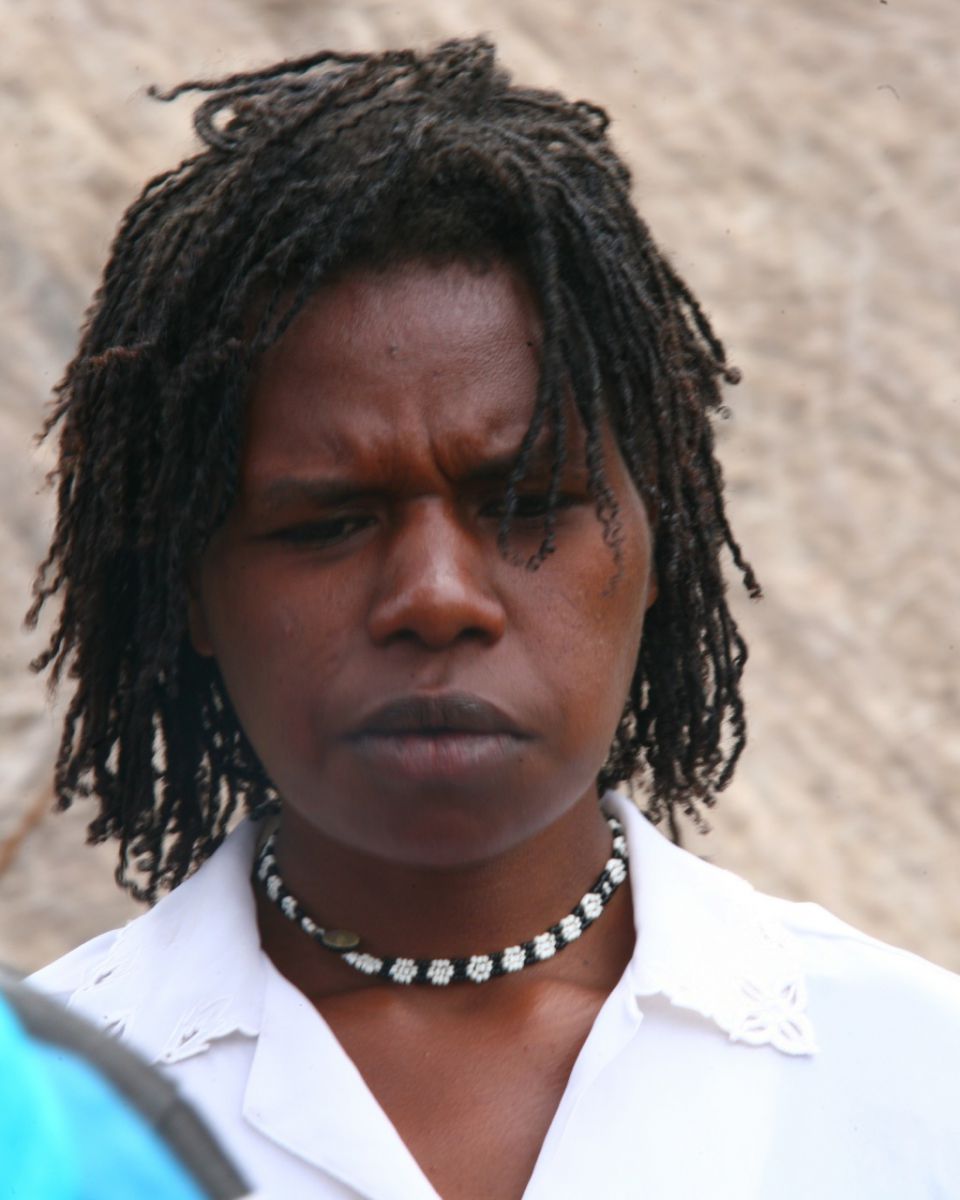
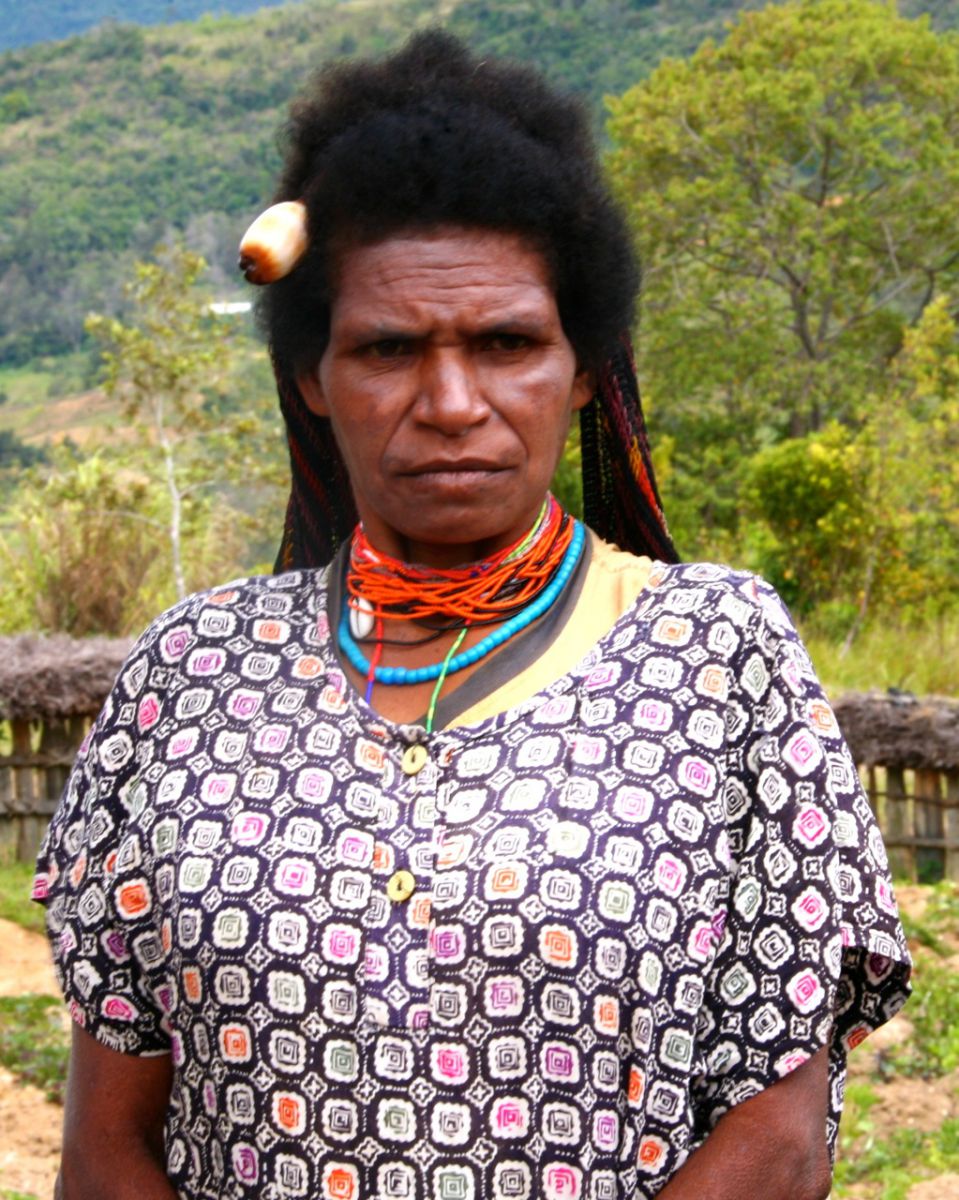
In good humor and in bad humor!

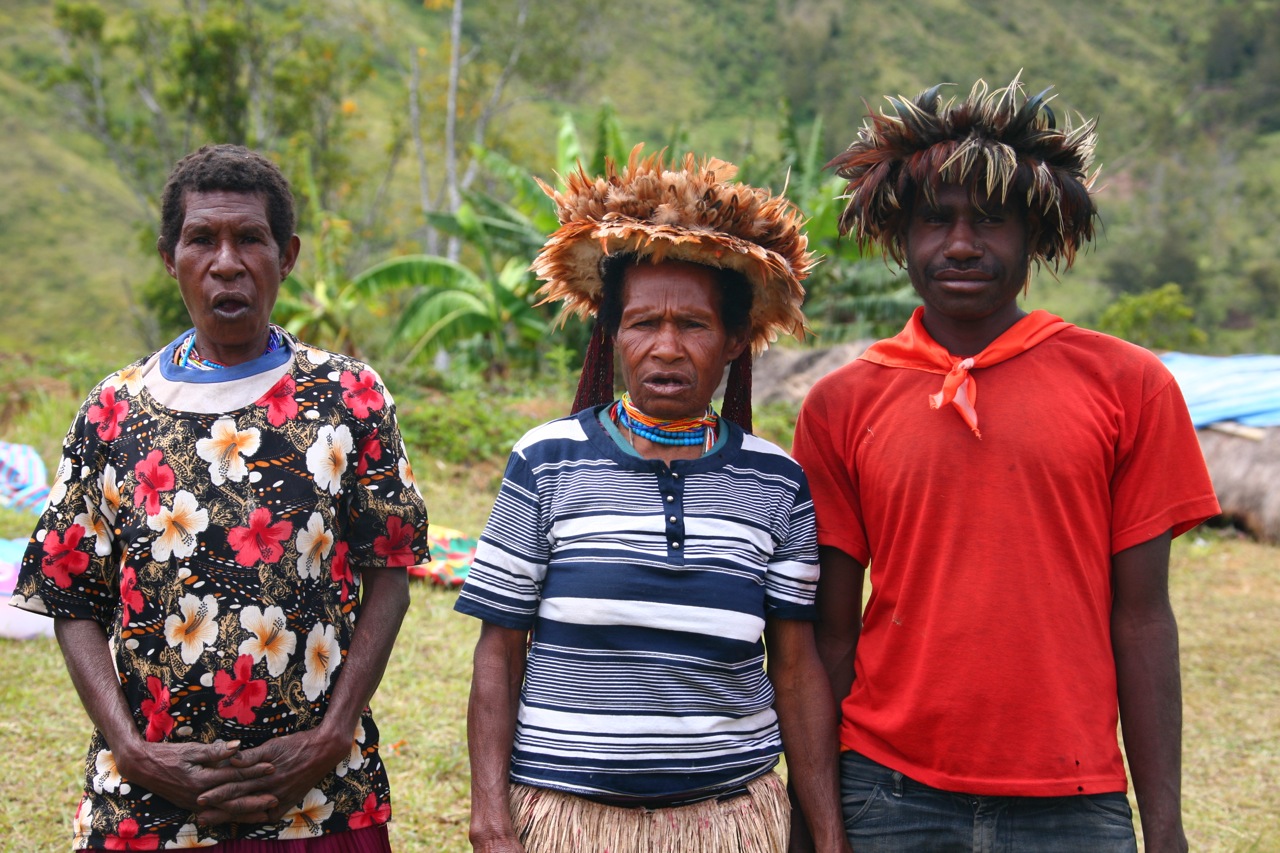
Wearingaheavyburden
or taking care of a child!
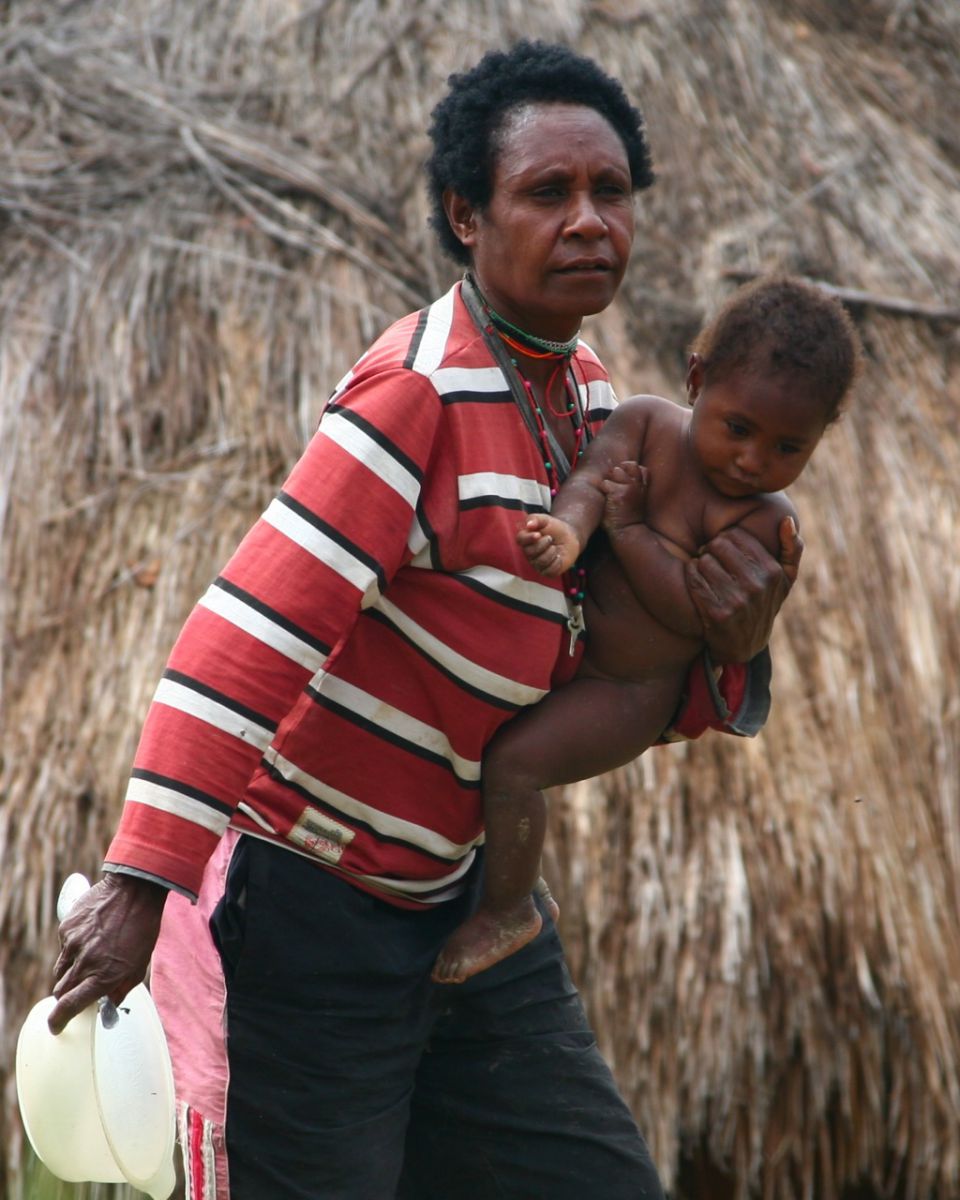
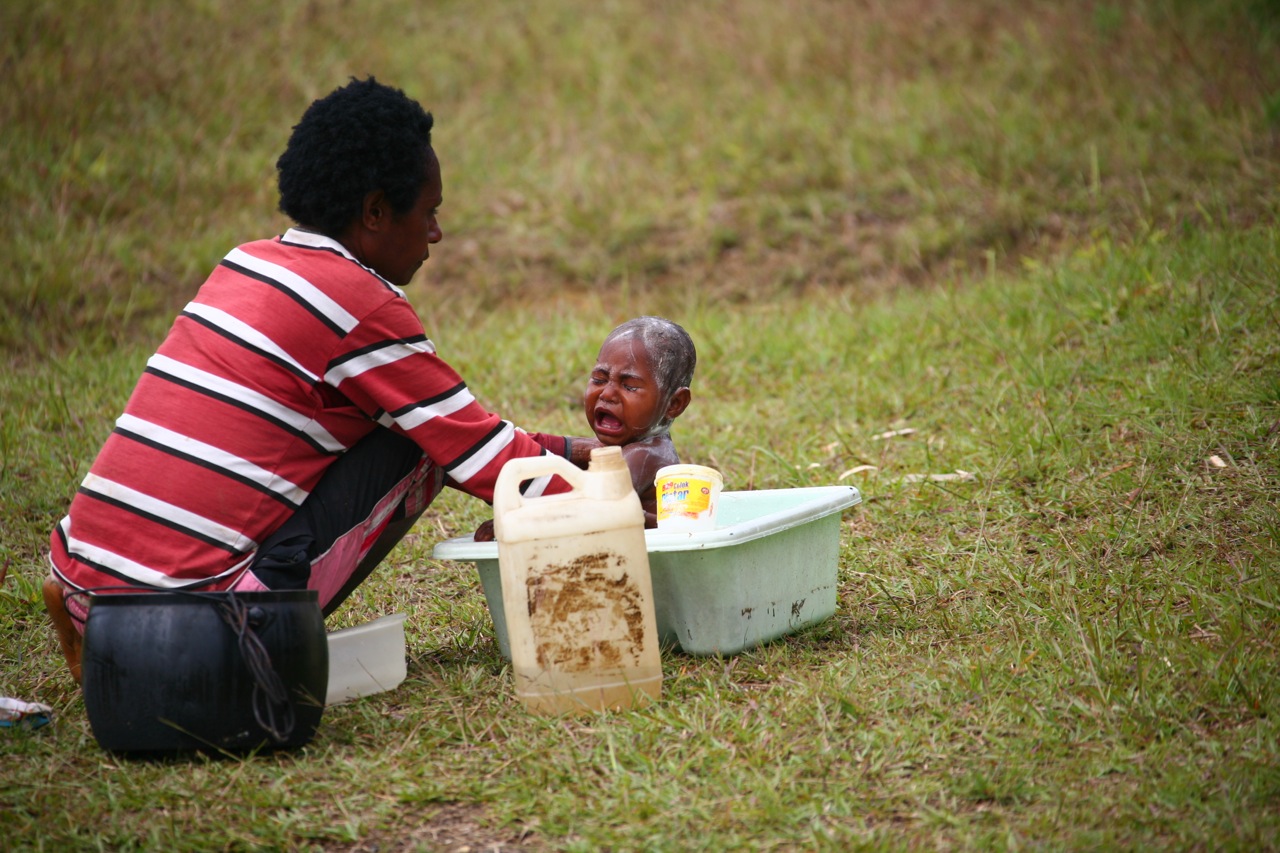
They often wear children on their head, in the bag or just on the shoulders.

This may be the reason why they obtain independence quite early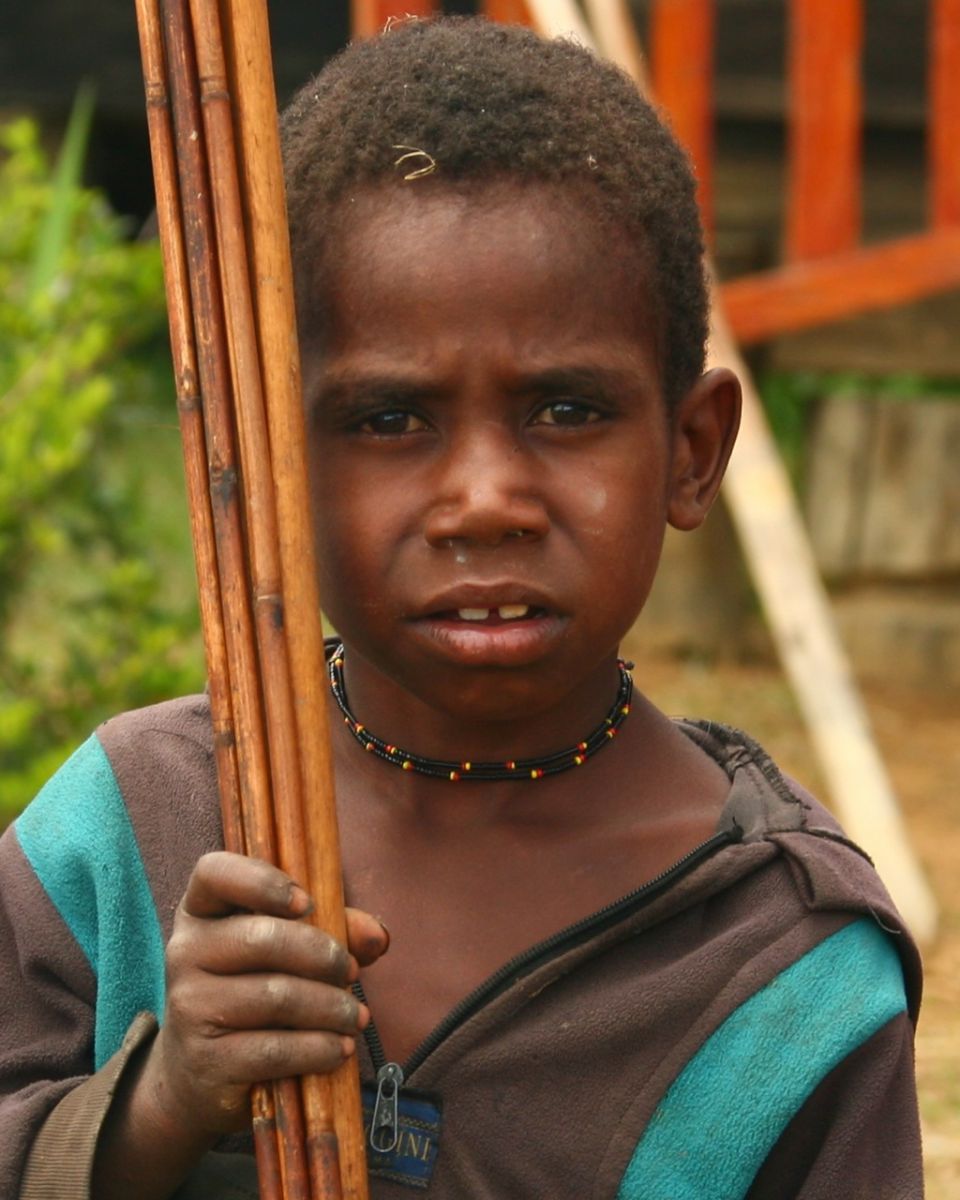
and grow into animal hunters as well as enemy headhunters!

Strong,
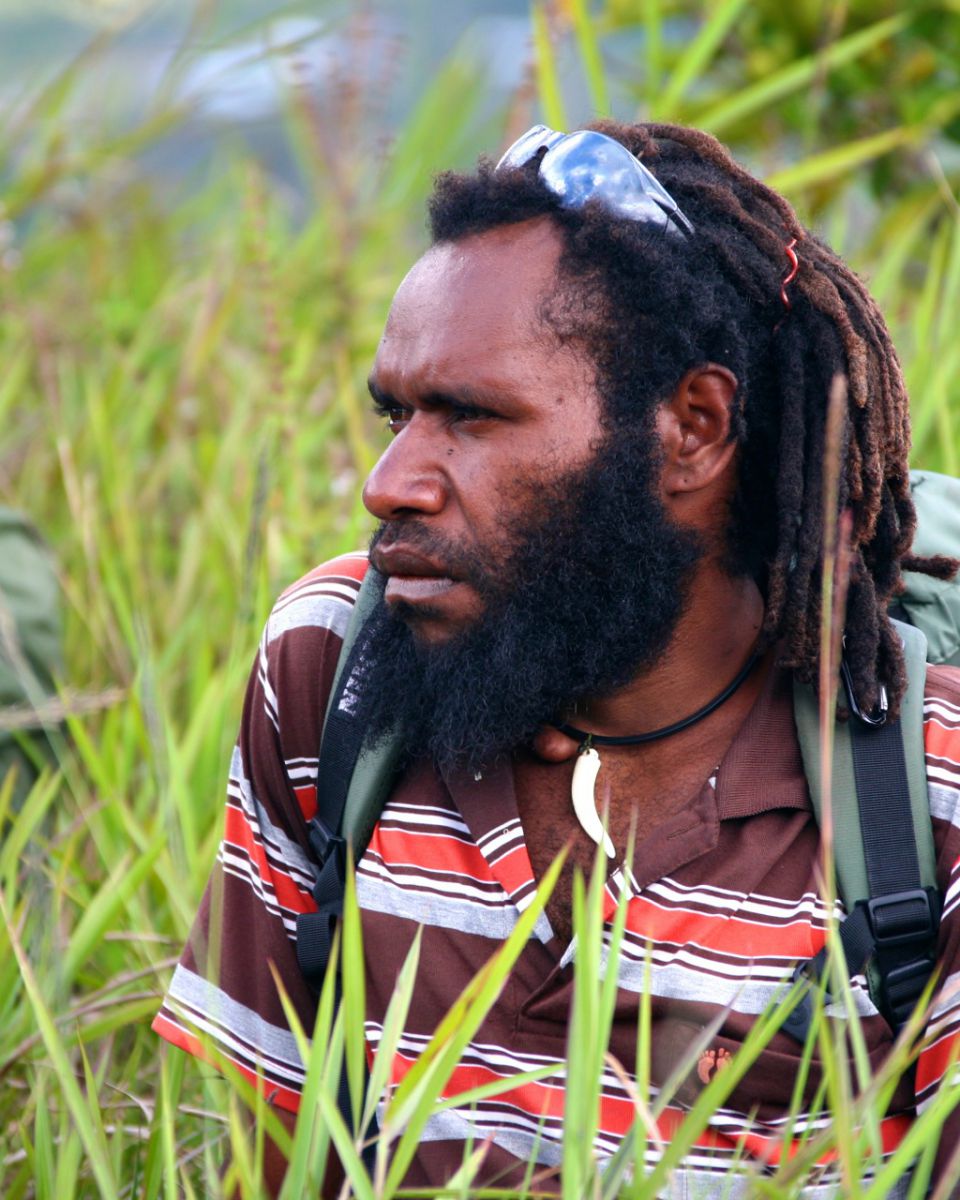
independent,
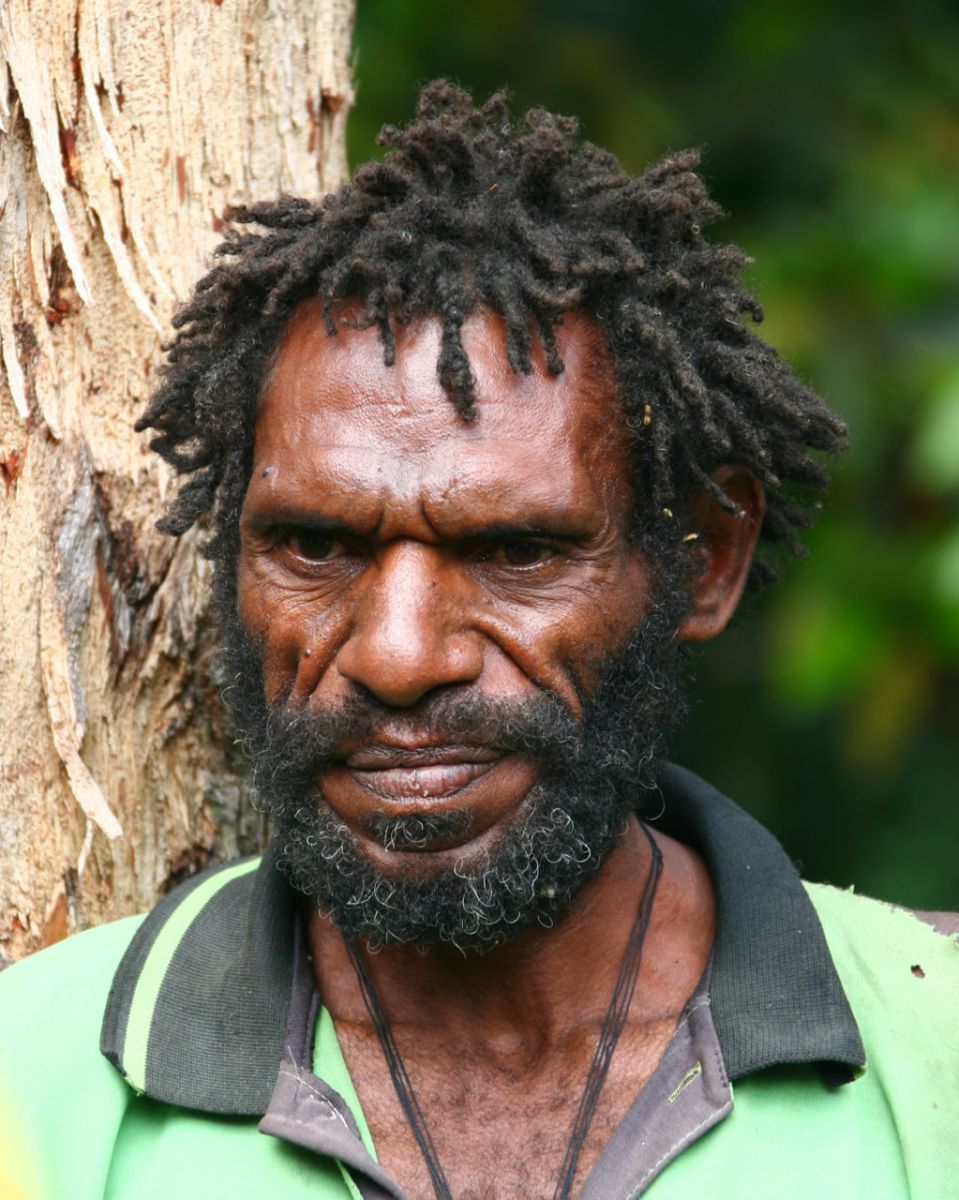
having no remembrance of relatives but respect for the elders!
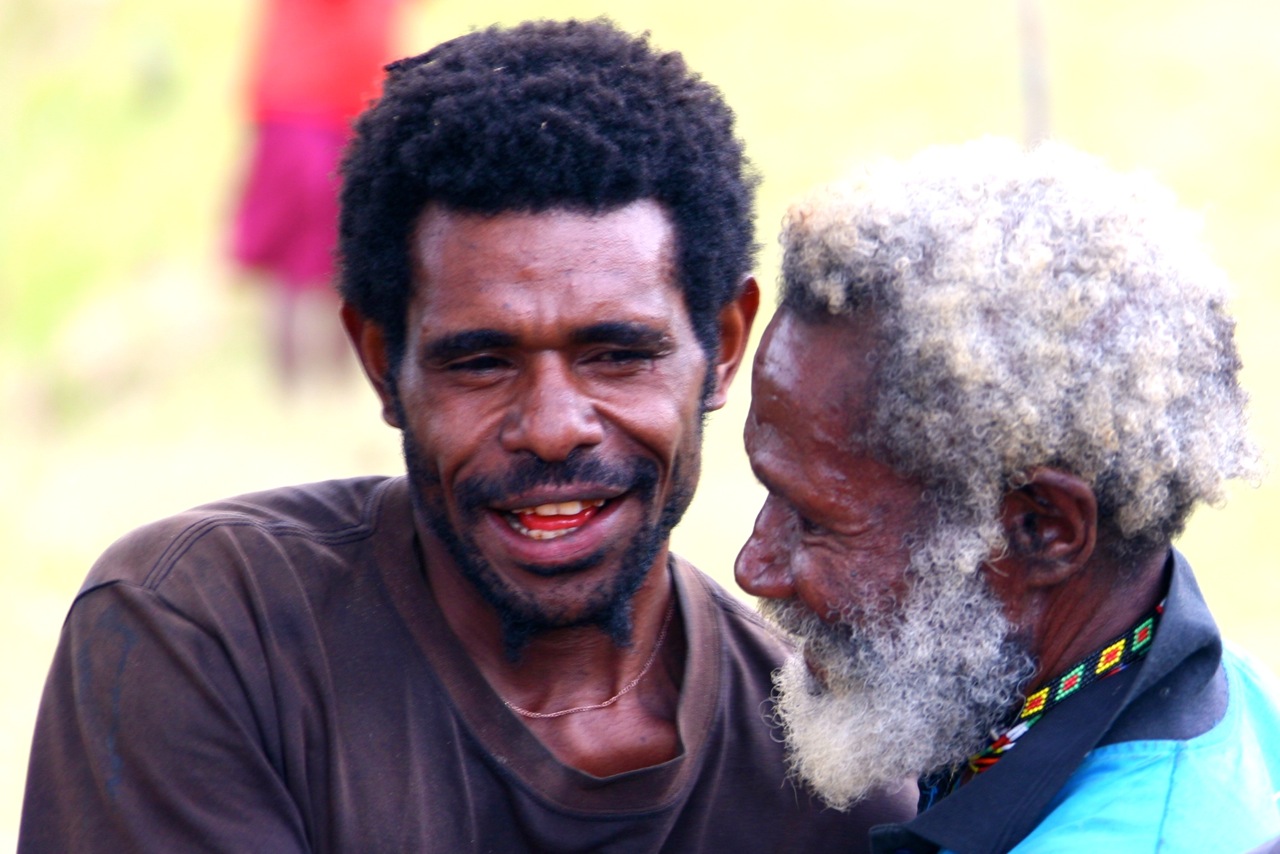
By the way, this gentleman is less than 40 years old. And they don’t live longer. That’sit…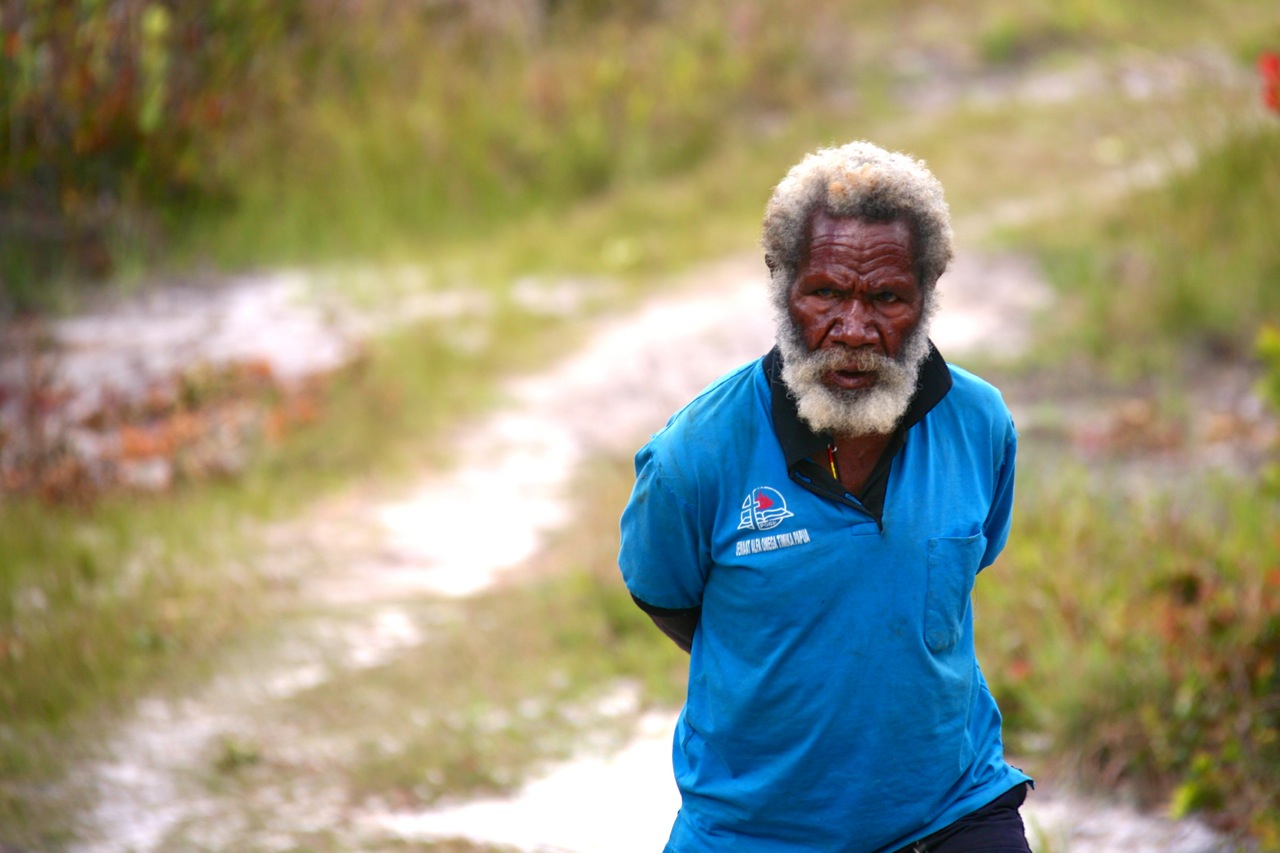
But I got distracted! On the clearing in the jungle we saw a two-storey round windowless house – honai. It is a traditional dwelling which is built of more than 100 plants.

All the villages in the Baliem valley introduce a small ground surrounded by a low fence and a number of honais.
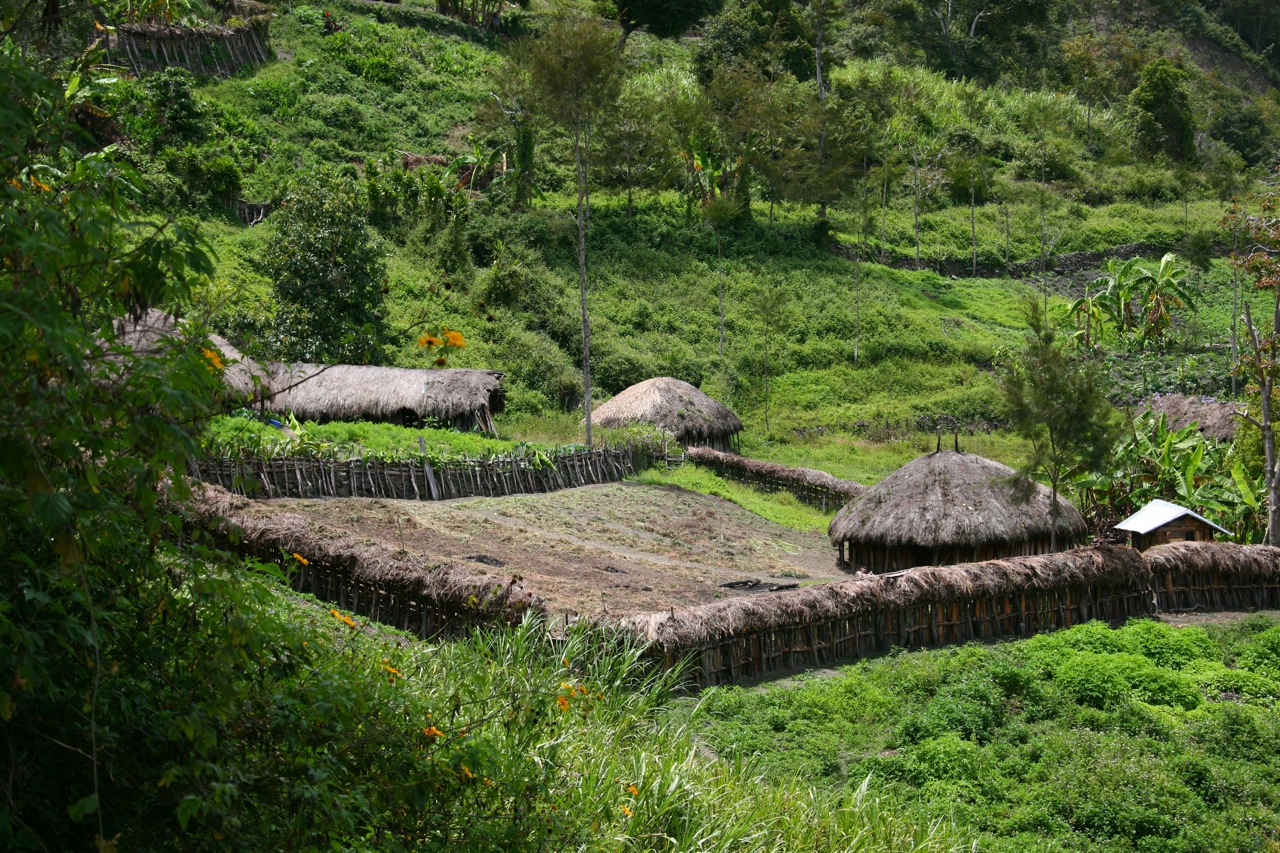
According to tradition in the Papuan villages men and women sleep in separate huts that is why all honais are divided on grounds of gender identity. Sometimes men visit their wives and having interacted on a “hormone level” they come back to their honais. Inside in the center of the honai there is a fire place and the smoke leaks through the roof, and the floor is covered with strawaround the honai perimeter. The utensil is made of clay and is used for roasting meat and vegetables.

Some of honais being located a short distance away had a fence with quite a specific entrance.
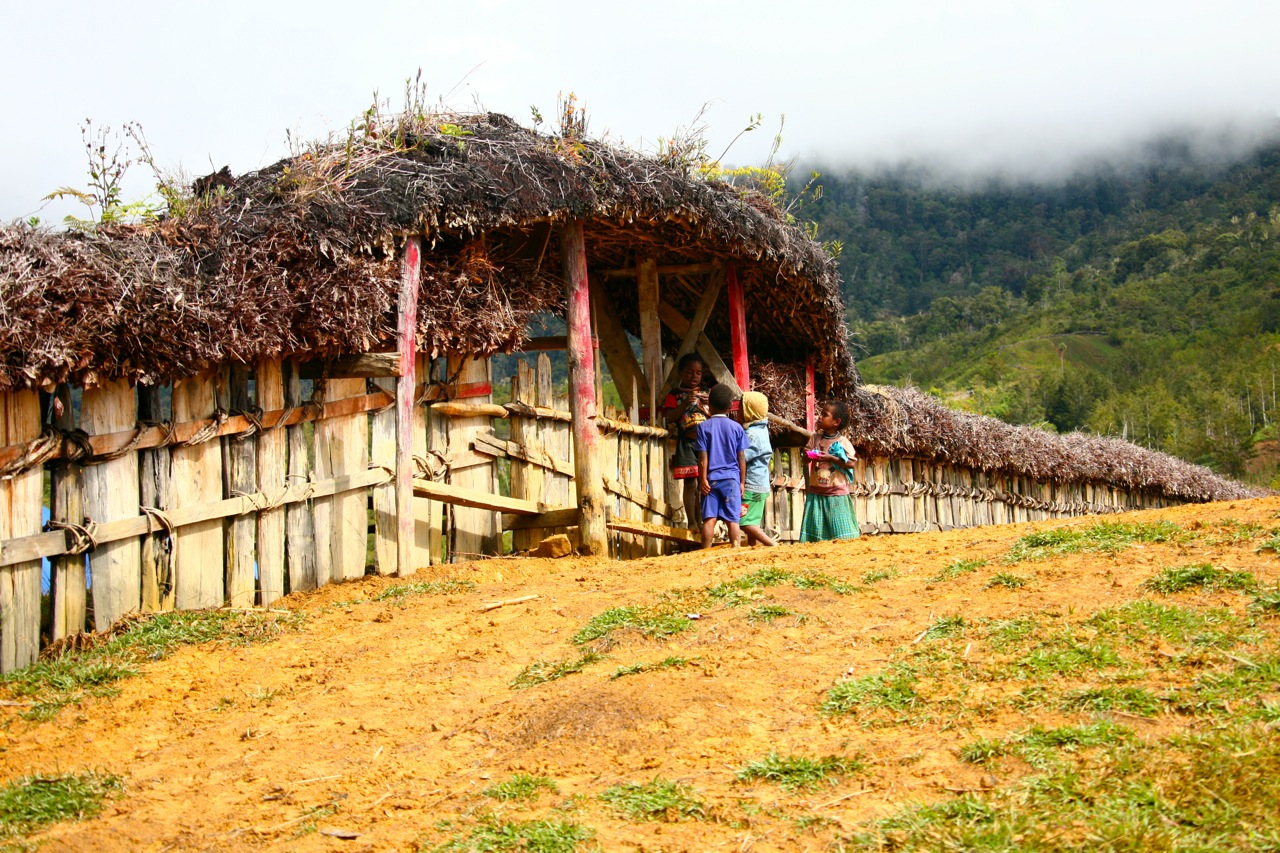
And some of them had even a kind of an entry way…

Other honais had a pile of rocks and stairs. 
But most of all we were astonished by the vicinity of… Protestant Church!

The representatives of the latter obviously brought pigs here to the mountainous part of the island thus impeding influence of Islam. Apig, bytheway, waswanderingaroundthere. Pigs are a kind of cash which is used to solve any issues: from resolving conflicts to paying for a bride.

Moreover, the tribesmen go to a larger church (not far from the village) wearing penis gourds! The scene is just spectacular!
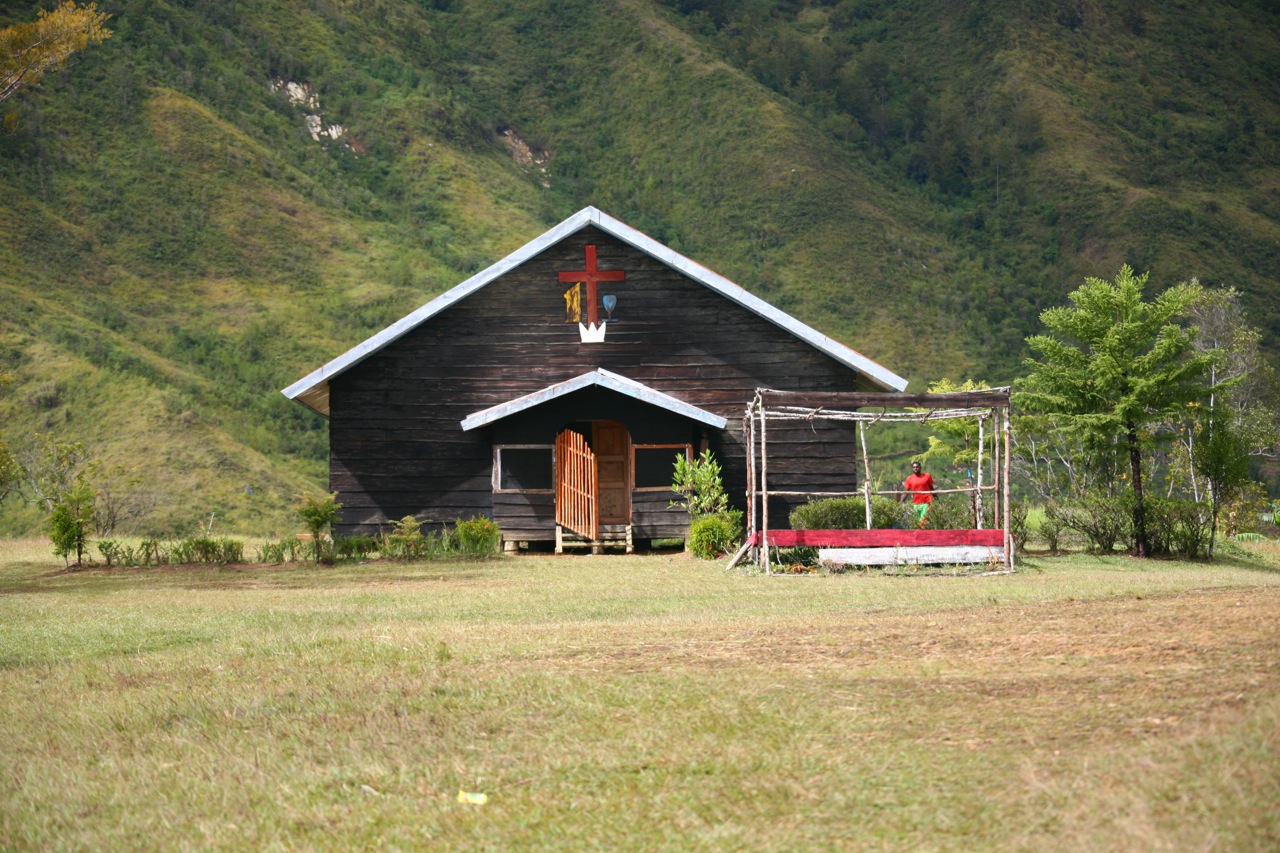
The children were running around there cheerful though with a big machete in hands. They say that’s not their fault, it’s just life...

Soon the sun went behind the clouds and having looked back we saw the tropical squall following us across the valley.

Fortunately we nearly approached the village where we were offered shelter.

By the way, the long fence is set to prevent the pigs from running away.

We had hardly put up our tents when the cloudburst descended upon us from the low hanging clouds accompanied by the chilling wind,
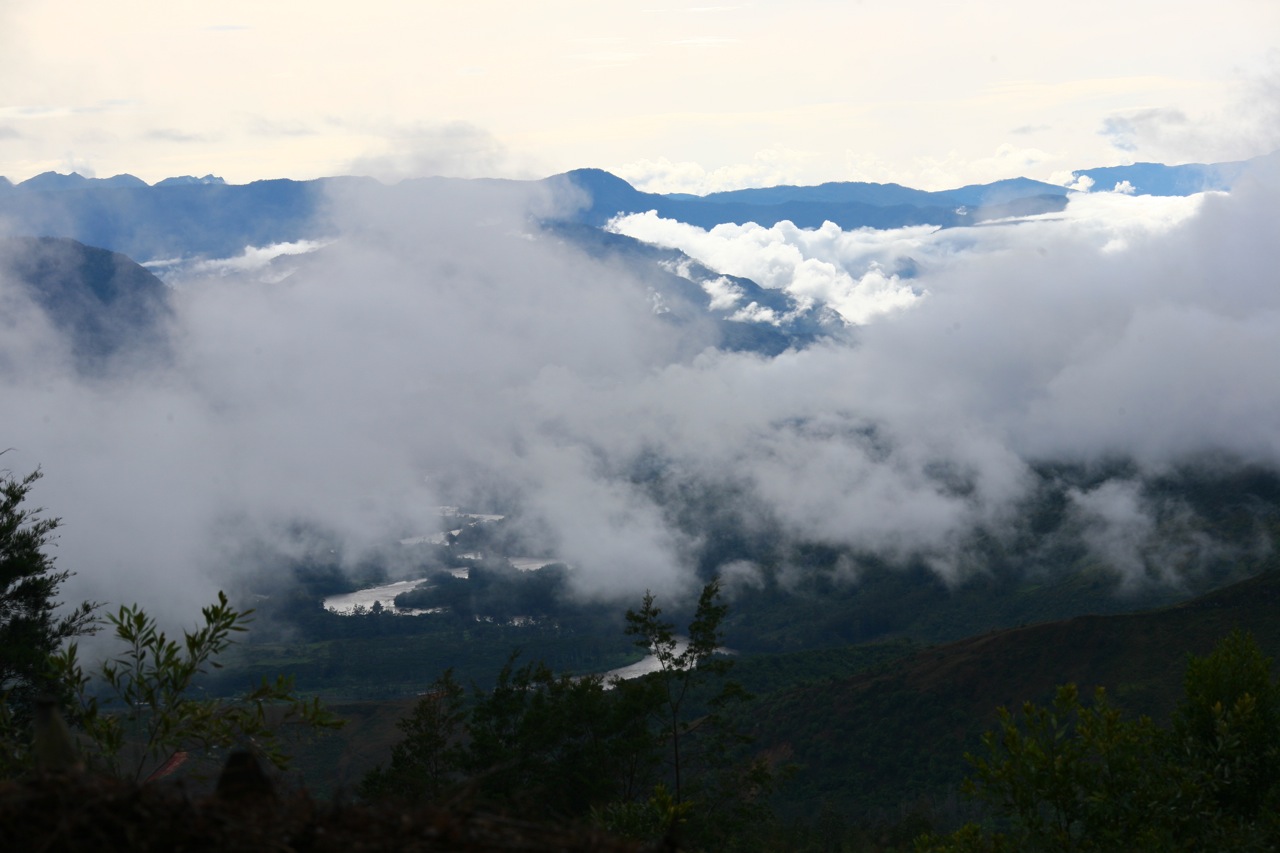
and more than a half of the tents were just carried away with the water or the wind.

We had to spend a night in the honai. It was warm, dark and dry inside and a lot of insects… But it was better to have insects close by as well as dry clothes. In the morning even the honai which stood the night “floods from the sky” was dried up in a quite interesting way and somehow homelike with the fire made.
The previous night due to the cloudburst and the lack of electricity we talked to the people of the Dani and Lani tribes under conditions of the dark honai and by candlelightand in the morning we had little time for it.

Although we didn’t take good photos we found out that they lived 38-40 years (though they looked 60), they didn’t remember their ancestors, had no written language and thought that they had originated from the Yali tribe and the latter had come from the sea. Mickeyisconsideredarespectablemaninthetribe. Everybody talks to him saying Baba – address to an elderly person of about 40 years old! In a word, static culture, static evolution!
But the evolution will never stop here due to the renewable resource. Under conditions of such heavy rains and the temperature above 30 degrees this place is the habitat for casuarina (it looks like ephedra, and there are a lot of photos with it). So, this plant accumulates atmospheric nitrogen and supplies the soil with it, and the nitrogen-rich soil becomes fertile. The amount of the batata and the taro (like potato) grown here is immense. Many beds develop into fields on the slopes.

In the morning we were saying good-bye to the hospitable Baliem river valley

and the tribe who had given us shelter was seeing us off
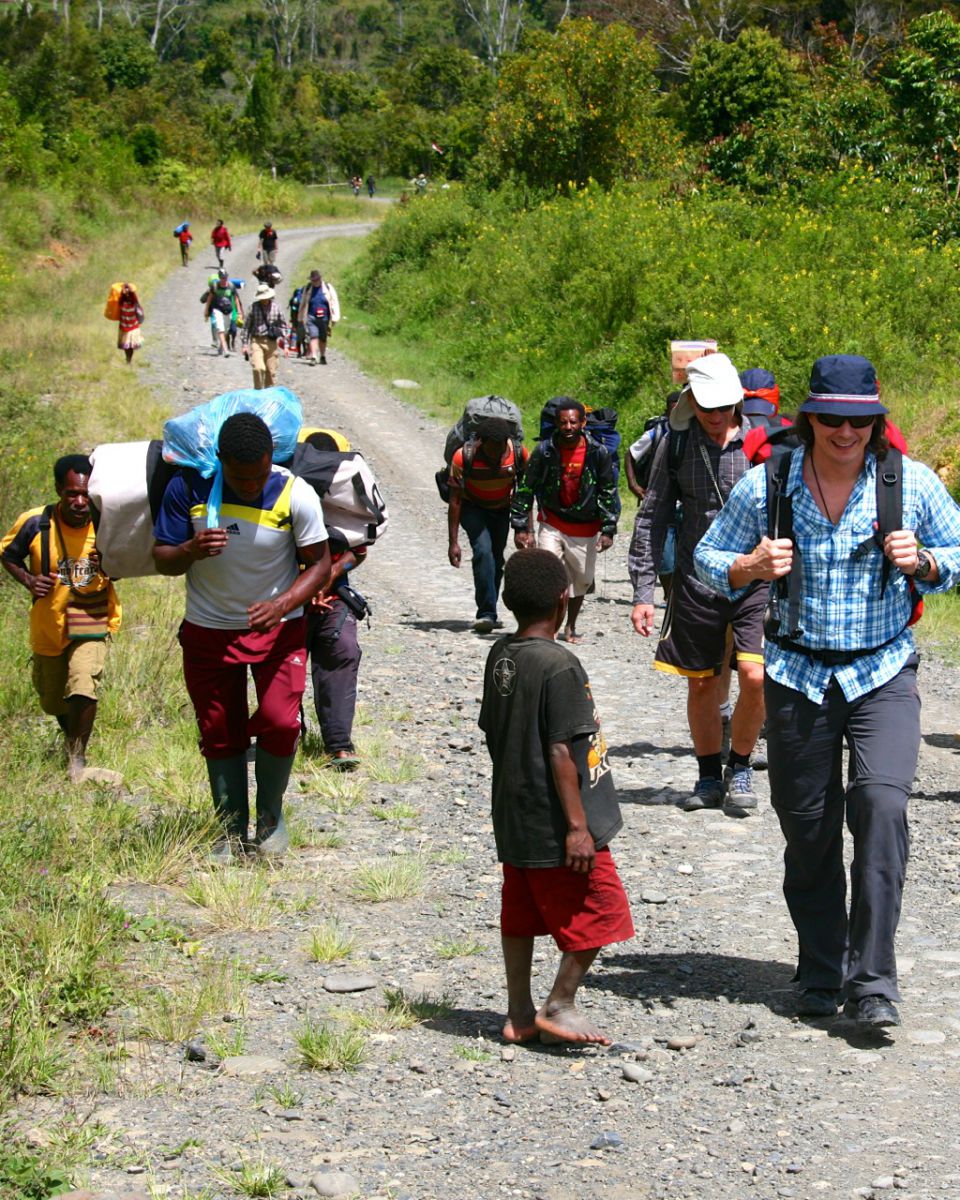
and singing a kind and touching song with a tone of sorrow: obviously we were interesting to them.
In return we gave them presents and treated them

shot together using the bow and finally hid from the storm under the same roof...
We felt a bit sad as well. It is always sad to part even if the acquaintance was extremely short and too rainy. And even if we didn’t manage to visit the Solutional cave with the mummies over 200 years of age we got something more: a sincere human interaction which was warm due to the glint in the eyes and the interest to each other but not due to the fire by which we spent the whole night! And the mummies… thanks to the Internet we can look at them here.
That warm-hearted farewell and the eyes full of sincerity and kindness certainly protected us all the time during our journey in the jungle, at the cannibals’, and fill our hearts with warmth every now and again.

And above all the way we spent 3 days in the Korowai tribe. I’ll tell you about it just one of these days...






















.jpg)



































































